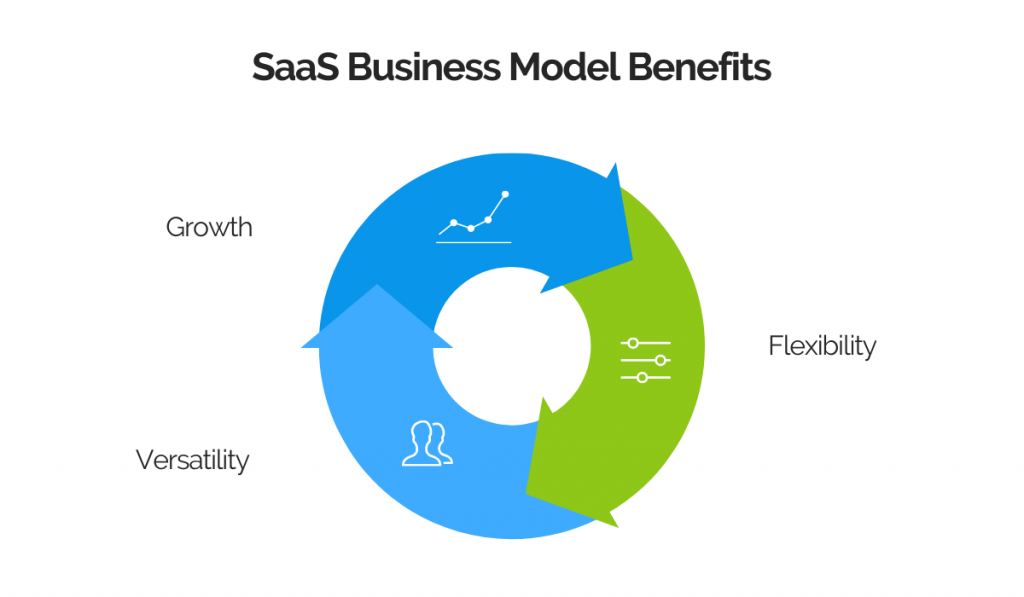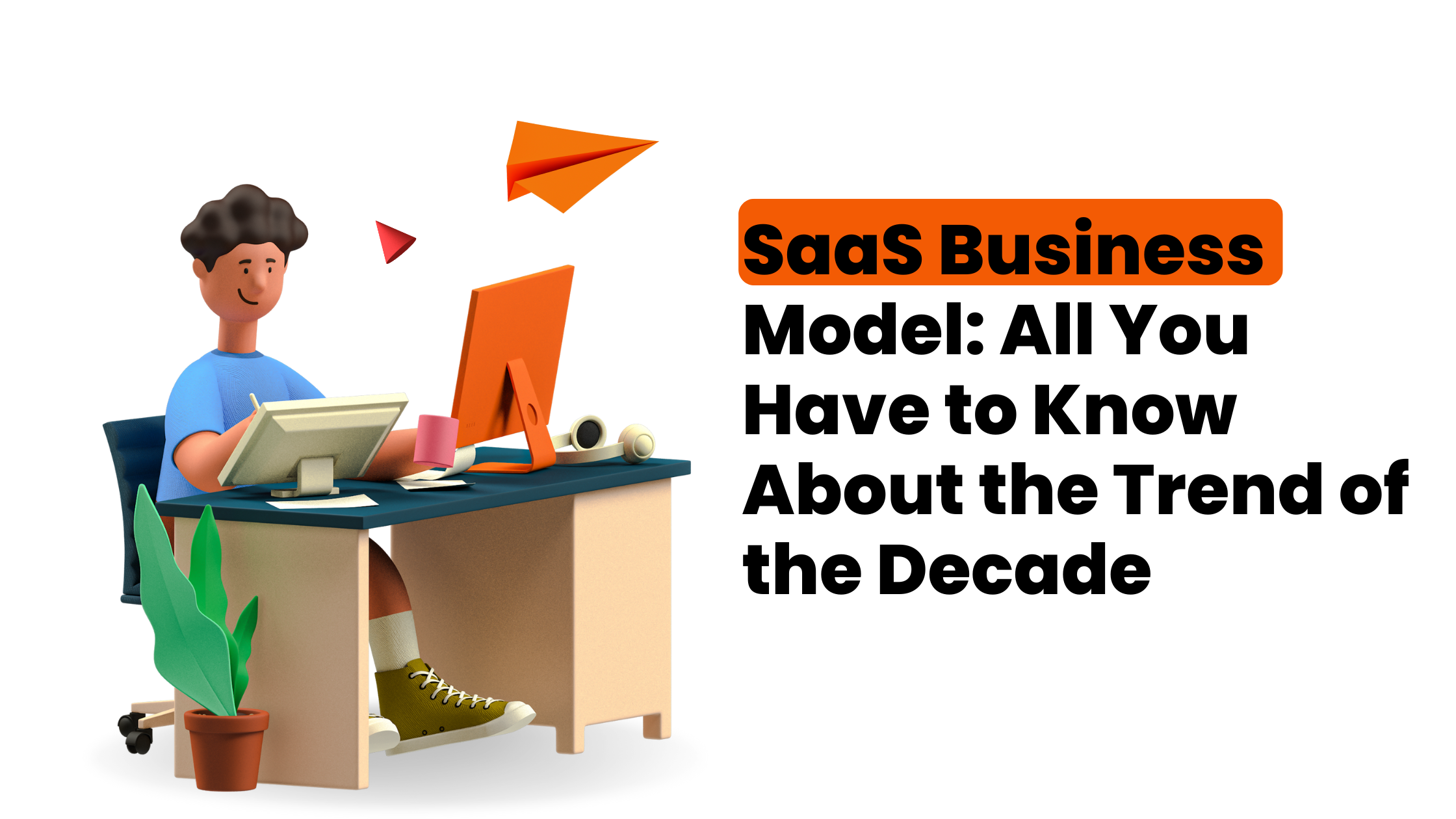The software industry has undergone a profound transformation over the past two decades, with the rise of Software-as-a-Service (SaaS) emerging as the dominant business model. SaaS has disrupted traditional software delivery and upended the way companies acquire and use software solutions.
Understanding the SaaS Model
At its core, the SaaS model involves delivering software applications over the internet, rather than installing them on a user’s local computer or server. Users access the software through a web browser or mobile app, and the software and associated data are hosted on the provider’s servers. This model offers several key advantages over the traditional on-premise software approach:
- No Upfront Costs: SaaS eliminates the need for large upfront investments in software licenses and hardware. Instead, users pay a recurring subscription fee, often on a monthly or annual basis.
- Scalability: SaaS solutions can easily scale up or down to meet changing business needs, without the hassle of managing additional hardware or software.
- Automatic Updates: SaaS providers are responsible for maintaining and updating the software, ensuring users always have access to the latest features and security patches.
- Accessibility: SaaS applications can be accessed from any internet-connected device, allowing for greater flexibility and mobility in how users work.
- Data Security: SaaS providers typically invest heavily in data security and redundancy, often providing a higher level of protection than many organizations could achieve on their own.
The Rise of SaaS
The SaaS model has seen exponential growth over the past two decades, driven by several key factors:
- Cloud Computing Maturity: The widespread adoption of cloud computing infrastructure, such as Amazon Web Services (AWS) and Microsoft Azure, has provided the scalable and reliable backend needed to support SaaS applications.
- Changing User Preferences: Consumers and businesses have grown accustomed to the convenience and flexibility of cloud-based services, driving demand for SaaS solutions that can be accessed anytime, anywhere.
- Technological Advancements: Improvements in web technologies, mobile devices, and internet connectivity have made SaaS applications more robust, responsive, and accessible than ever before.
- Cost Savings: The subscription-based pricing model of SaaS, combined with the elimination of hardware and IT maintenance costs, has made it a more cost-effective solution for many organizations.
- Competitive Pressure: As SaaS solutions have become more prevalent, businesses have felt increasing pressure to adopt these modern, cloud-based tools to remain competitive and meet the expectations of their customers and employees.
The SaaS Landscape
The SaaS market has grown exponentially, with thousands of companies offering a wide range of cloud-based solutions across various industries and business functions. Some of the most prominent and successful SaaS companies include:
- Salesforce: A leading provider of customer relationship management (CRM) software, Salesforce has been a pioneer in the SaaS industry, with a market capitalization of over $200 billion.
- Microsoft 365: Microsoft’s suite of cloud-based productivity and collaboration tools, including Office 365, has become a dominant force in the SaaS market.
- Adobe Creative Cloud: Adobe’s subscription-based offering for its suite of creative software, such as Photoshop and Illustrator, has transformed the way creative professionals access and use these tools.
- Zoom: The video conferencing platform that became ubiquitous during the COVID-19 pandemic, Zoom has demonstrated the power of SaaS to enable remote work and collaboration.
- Slack: The popular team communication and collaboration tool, Slack has disrupted the traditional email-centric approach to workplace communication.
These are just a few examples of the many successful SaaS companies that have emerged over the past two decades, each addressing specific business needs and user preferences.
The Benefits of SaaS
The rise of the SaaS model has brought numerous benefits to both businesses and consumers:
- Reduced IT Costs: By eliminating the need for on-premise hardware and software, SaaS solutions can significantly reduce the IT infrastructure and maintenance costs for organizations.
- Improved Scalability: SaaS applications can easily scale up or down to meet changing business needs, without the hassle of managing additional hardware or software.
- Automatic Updates: SaaS providers are responsible for maintaining and updating the software, ensuring users always have access to the latest features and security patches.
- Increased Mobility: SaaS applications can be accessed from any internet-connected device, allowing for greater flexibility and mobility in how users work.
- Enhanced Data Security: SaaS providers typically invest heavily in data security and redundancy, often providing a higher level of protection than many organizations could achieve on their own.
- Faster Time-to-Value: SaaS solutions can be deployed and integrated more quickly than traditional on-premise software, allowing businesses to realize the benefits of new tools and technologies more rapidly.
- Predictable Costs: The subscription-based pricing model of SaaS provides a more predictable and manageable cost structure, compared to the large upfront investments required for on-premise software.
These benefits have driven the widespread adoption of SaaS solutions across a wide range of industries and business functions, from customer relationship management and human resources to enterprise resource planning and collaboration tools.
The Evolution of SaaS
As the SaaS market has matured, the industry has seen several key trends emerge:
- Increased Specialization: While early SaaS offerings tended to be broad, general-purpose solutions, the market has become increasingly specialized, with SaaS providers focusing on specific industry verticals or business functions.
- Vertical Integration: Some SaaS companies have expanded their offerings by acquiring or integrating complementary solutions, creating more comprehensive and integrated platforms for their customers.
- Artificial Intelligence and Machine Learning: SaaS providers are increasingly incorporating AI and ML capabilities into their solutions, enabling more intelligent and personalized experiences for users.
- Ecosystem Development: Many SaaS companies are building robust partner ecosystems, allowing for the integration of third-party applications and the development of custom solutions tailored to specific customer needs.
- Consolidation: As the SaaS market matures, we have seen increased consolidation, with larger players acquiring smaller, specialized SaaS companies to expand their offerings and customer base.
- Global Expansion: SaaS companies are increasingly looking to expand their reach beyond their home markets, tapping into new geographic regions and customer segments.
These trends reflect the ongoing evolution of the SaaS industry, as providers strive to meet the changing needs and expectations of their customers.
Measuring SaaS Performance
Given the unique characteristics of the SaaS business model, traditional financial metrics often fall short in capturing the key drivers of success. Instead, SaaS companies and investors have developed a set of specialized metrics to measure and optimize their performance:
- Annual Recurring Revenue (ARR): This metric represents the annualized value of a company’s subscription-based revenue, providing a clear picture of the business’s long-term revenue potential.
- Monthly Recurring Revenue (MRR): Similar to ARR, MRR measures the monthly subscription-based revenue, allowing for more granular analysis and forecasting.
- Churn Rate: This metric tracks the rate at which customers cancel or fail to renew their subscriptions, providing insight into customer satisfaction and the overall health of the business.
- Customer Lifetime Value (LTV): LTV estimates the total revenue a customer is expected to generate over the course of their relationship with the company, helping to guide customer acquisition and retention strategies.
- Customer Acquisition Cost (CAC): CAC measures the cost of acquiring a new customer, allowing SaaS companies to assess the efficiency and profitability of their marketing and sales efforts.
- LTV: CAC Ratio: This ratio compares the lifetime value of a customer to the cost of acquiring that customer, providing a key indicator of the overall health and sustainability of the business model.
- Net Retention Rate: This metric tracks the percentage of revenue retained from existing customers, including the impact of upsells, cross-sells, and downgrades, providing insight into customer loyalty and the company’s ability to grow its customer base.
By closely monitoring these SaaS-specific metrics, companies can gain a deeper understanding of their business performance, identify areas for improvement, and make more informed strategic decisions.
Challenges and Considerations
While the SaaS model has brought numerous benefits, it also presents some unique challenges and considerations for businesses to navigate:
- Data Security and Compliance: SaaS providers are responsible for the security and privacy of their customers’ data, which can be a significant concern, especially for businesses in highly regulated industries.
- Integration and Interoperability: Ensuring seamless integration between SaaS solutions and a company’s existing systems and workflows can be a complex and ongoing challenge.
- Vendor Lock-in: Reliance on a single SaaS provider can create a degree of vendor lock-in, making it difficult for customers to switch to alternative solutions in the future.
- Pricing and Monetization: Determining the optimal pricing and monetization strategies for SaaS offerings can be a complex and evolving process, as providers seek to balance customer value, market competition, and profitability.
- Talent Acquisition and Retention: SaaS companies often require specialized technical and customer-facing talent, which can be challenging to attract and retain in a competitive job market.
- Regulatory and Legal Considerations: SaaS providers must navigate a complex landscape of data privacy, security, and other regulatory requirements, which can vary significantly across different regions and industries.
- Scalability and Infrastructure Management: As SaaS businesses grow, they must ensure their underlying infrastructure and operations can scale to meet increasing demand without compromising performance or reliability.
Addressing these challenges requires a deep understanding of the SaaS business model, as well as a commitment to continuous innovation, customer-centricity, and operational excellence.
The Future of SaaS
As the SaaS industry continues to evolve, several key trends are expected to shape the future of this dominant business model:
- Increased Specialization and Vertical Integration: SaaS providers will continue to focus on specific industry verticals and business functions, offering more specialized and integrated solutions to meet the unique needs of their customers.
- Advancements in Artificial Intelligence and Machine Learning: AI and ML will become increasingly integrated into SaaS offerings, enabling more intelligent, personalized, and automated experiences for users.
- Expansion of Ecosystem Partnerships: SaaS companies will continue to build robust partner ecosystems, allowing for seamless integration with complementary solutions and the development of custom applications.
- Continued Globalization: SaaS providers will increasingly look to expand their reach beyond their home markets, tapping into new geographic regions and customer segments around the world.
- Increased Focus on Sustainability and Social Responsibility: As environmental and social concerns become more prominent, SaaS companies will need to prioritize sustainability and ethical practices in their operations and product offerings.
- Advancements in Edge Computing and 5G: Emerging technologies like edge computing and 5G will enable new SaaS use cases and enhance the performance and accessibility of cloud-based applications.
- Consolidation and Mergers & Acquisitions: The SaaS industry is expected to see continued consolidation, with larger players acquiring smaller, specialized providers to expand their capabilities and customer base.
As these trends unfold, the SaaS application development business model will continue to evolve, driving innovation, disruption, and transformation across a wide range of industries and business functions.

Conclusion
The rise of the SaaS business model has been one of the most significant developments in the software industry over the past two decades. By offering cloud-based, subscription-based access to software solutions, SaaS providers have transformed the way businesses and consumers acquire and use technology. The benefits of the SaaS model, including reduced IT costs, improved scalability, and enhanced data security, have driven widespread adoption across a wide range of industries and business functions. As the SaaS market has matured, we have seen the emergence of specialized solutions, increased ecosystem integration, and the incorporation of advanced technologies like AI and ML. Looking ahead, the future of the SaaS industry is poised to be shaped by continued specialization, global expansion, and advancements in areas like edge computing and sustainability. As SaaS companies navigate the unique challenges and considerations of this business model, they will need to remain agile, customer-centric, and committed to innovation to stay ahead of the curve. Overall, the SaaS business model has proven to be a transformative force in the technology landscape, and its impact is likely to only grow stronger in the years to come.







